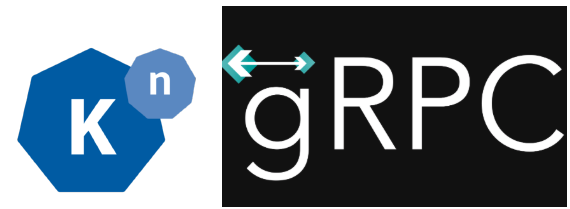
I was recently going through the ASP.NET Core updates in .NET Core 3.0 Preview 3 post, this section got my attention: gRPC template.
Apparently, .NET Core 3.0 got a new gRPC template for easily building gRPC services with ASP.NET Core. I tested gRPC and .NET before and I have some samples in my grpc-samples-dotnet repo. Even though gRPC and .NET worked before, it wasn’t that straightforward to setup. I was curious to try out the new gRPC template and see how it helped.
Additionally, I wanted to go beyond a simple gRPC service and see what it takes to turn it into a serverless Knative service with all the benefits of Knative such as autoscaling, revisions, etc.
If you want to try this out yourself, I have a new section in my Knative tutorial: Serverless gRPC with Knative with detailed instructions. In this blog post, I want to highlight some of the main steps for a serverless, gRPC enabled, ASP.NET Core service deployed to Knative on Google Kubernetes Engine (GKE).
Create a gRPC service with the new template
Creating a HelloWorld gRPC service with .NET Core 3.0 couldn’t be any simpler with the gRPC template. This is the command:
\> dotnet new grpc -o GrpcGreeter
This command does a few things in the background:
- Creates an ASP.NET Core project with all gRPC dependencies already included.
- Creates a gRPC service definition file named
greet.proto. - Auto-generates all gRPC stubs based on the service definition file.
- Creates a gRPC service (
GreeterService.cs) based on the auto-generated gRPC stub. - Configures the gRPC pipeline in
Startup.csto map toGreeterService.cs
The end result is that you have all of gRPC details taken care of and you can simply start running the service:
\> dotnet run
info: Microsoft.Hosting.Lifetime\[0\] Now listening on: [http://localhost:50051](http://localhost:50051)
This is much simpler than what I had to before. Great job from the .NET Core team!
Containerize the gRPC service
Next step is to containerize the gRPC service, so it can be deployed to Knative. The Dockerfile looks something like this:
FROM mcr.microsoft.com/dotnet/core/sdk:3.0
WORKDIR /app
COPY \*.csproj .
RUN dotnet restore
COPY . .
RUN dotnet publish -c Release -o out
ENV PORT 8080
ENV ASPNETCORE\_URLS http://\*:${PORT}
CMD \["dotnet", "out/GrpcGreeter.dll"\]
I’m using .NET Core 3.0 as the base image and making sure that the service runs on port 8080, instead of the default gRPC port 50051. Nothing special.
Deploy the Knative service
Once the image is built and pushed, define the Knative service in a service.yaml file:
apiVersion: serving.knative.dev/v1beta1
kind: Service
metadata:
name: grpc-greeter
namespace: default
spec:
template:
spec:
containers:
# Replace {username} with your actual DockerHub
- image: docker.io/{username}/grpc-greeter:v1
**ports:
- name: h2c
containerPort: 8080**
This is a plain Knative service definition pointing to the image. The only special part is the ports section where we define a h2c port 8080. This tells Knative that container is expecting HTTP/2 traffic on port 8080.
Deploy the Knative service:
\> kubectl apply -f service.yaml
Make sure that a pod with gRPC service is running:
\> kubectl get pods
NAME grpc-greeter-5tpwl-deployment-6fb423289c5-r5qmt
Test it out
To test out the gRPC service, you need the corresponding gRPC enabled client. You can refer to Create a gRPC client part of my tutorial on how to create a GrpcGreeterClient.cs. Once you have the client, just point to your Knative service. You should see a reply from the gRPC service running in Knative:
\> dotnet run
Greeting: Hello GreeterClient Press any key to exit...
On the surface, this looks like the response you’d get from a plain gRPC service. However, it’s a Knative managed service, meaning you have 0-n automatic scaling, revisions and all other benefits of running a service in Knative.
.NET Core 3.0 makes it really easy to get started with gRPC and Knative transforms plain gRPC into serverless-style services that autoscale and respond to events. This is a powerful combination and hopefully this blog post and the corresponding tutorial gave you a glimpse of how to use .NET Core with gRPC and Knative.